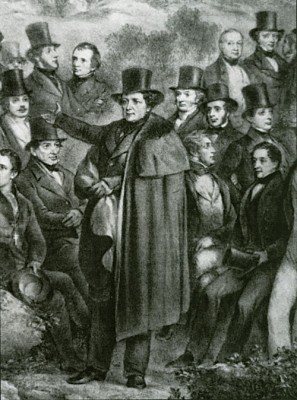Search Results for 'John Darcy'
3 results found.
Daniel O’Connell leaves the Irish stage

Having got him there, Clifden was not going to let Daniel O’Connell go easily. The meeting, on the edge of the town had been an unparalleled success, and the excitement prevailed. The organisers had constructed a huge pavilion ‘on the highest point of the town’, covered with canvass. It must have been of considerable size as 300 men sat at long tables, while 200 ladies sat in the adjoining galleries. At 8pm that Sunday evening, September 17 1843, O’Connell and other guests entered the pavilion with one of the Galway Temperance bands preceding him with lively tunes. His arrival was greeted with the ‘ most deafening cheers’, while the ladies waved scarves and handkerchiefs.
‘A more exhilarating or magnificent scene could not be witnessed’

On Friday evening, September 15 1843, Daniel O’Connell, with a small group of close friends, including his son Daniel and Dr John Grey, proprietor of the Freeman’s Journal, arrived in Galway. The excitement was intense. O’Connell, at 68 years of age, was at the height of his powers. Fourteen years previously he had succeeded in removing the oaths that had prevented Catholics from becoming members of parliament. He took his seat as MP for Clare, the first Irish Catholic to do so. His charismatic personality, brilliant oratory, and powerful intellect, had won him an enormous following, not only throughout Ireland but in Europe as well. His achievement earned him the title of The Liberator, which had all the resonance of an ancient and powerful king who had raised the sword of freedom.
Scholars from St Brendan's, 1956

St Brendan's National School opened on St Brendan's Road, Woodquay, in 1916. It was an all-male school which initially catered for boys from Woodquay, Sickeen, and Bohermore. After World War II it began to attract pupils from Shantalla and Newcastle. The school closed down in the 1960s with most of the boys transferring to St Patrick's. The school building was hidden behind a high wall, and it was later demolished. Part of the boundary wall is still visible at the back of the rather dull office block that replaced it.

